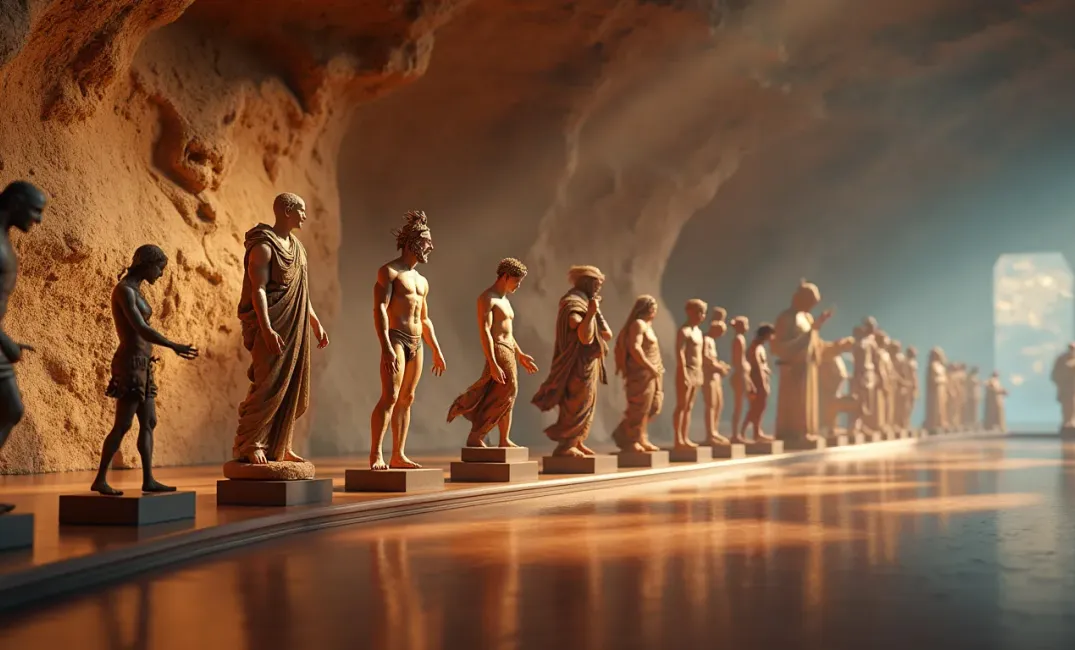Introduction: Humanity's Creative Impulse
Humanity's creative impulse stands as a testament to our capacity for innovation, expression, and adaptation. From the earliest cave paintings to the digital art of today, creativity has been central to the evolution of human experience, shaping societies, cultures, and individual identities. This exploration delves into the legacy of human creativity, unveiling how imagination fuels progress, transforms perceptions, and inspires an ever-evolving canvas of possibility.
"The true sign of intelligence is not knowledge but imagination." — Albert Einstein
The Dawn of Creativity: Ancient Expressions
Primitive Artistry
- Cave Paintings and Carvings: The origins of human creativity are etched into stone and cave walls, where our ancestors expressed their perception of the world through images of animals and abstract symbols. Sites like Lascaux and Altamira offer glimpses into early human thoughts, rituals, and essential narratives, bringing past worlds to life.
- The Birth of Symbolic Thought: The creation of symbols, such as petroglyphs and early alphabets, marks mankind's journey towards abstract thinking. Symbolism allowed communities to convey complex ideas, emotions, and beliefs, facilitating cultural cohesion and historical record-keeping.
Rituals and Oral Traditions
- Dance and Music: Rhythm and movement formed an integral part of prehistoric life. Dance and musical expressions were used in rituals to bind communities, celebrate life, and communicate with the divine. Their impact continues in many contemporary cultural practices.
- Oral Narratives: Storytelling served as the bedrock of creativity, preserving histories, myths, and teachings across generations. This oral tradition cultivated imagination, reinforced social norms, and inspired spiritual beliefs, laying foundations for written literature.
The Creativity of Civilizations: Architecture, Literature, and Philosophy
Architectural Wonders
- Monuments of the Past: Ancient civilizations, from Egypt's pyramids to the Maya's temples, used architecture to express religious devotion and political power. These structures demonstrated human engineering prowess and aesthetic sensibility.
- Urban Planning: Cities like Mohenjo-daro and Rome evolved as hubs of creativity where planners and architects constructed complex infrastructures—markets, arenas, and aqueducts—that enhanced societal function and beauty.
Literary and Philosophical Creations
- Epics and Dramas: The literary landscape flourished with epics like "The Odyssey" and "The Epic of Gilgamesh," exploring themes of heroism, morality, and the human condition. Greek drama, with its tragedies and comedies, delved into the complexities of human nature.
- Philosophical Dialogues: Philosophers like Socrates, Confucius, and Siddhartha Gautama (Buddha) engaged creativity to address life’s profound questions, illustrating human potential for intellectual exploration and ethical reflection.
Renaissance and Enlightenment: Rebirth and Revolution
The Artistic Renaissance
- Masters of the Canvas: The Renaissance era was marked by a revival in artistic exploration. Artists like Leonardo da Vinci and Michelangelo embraced anatomy, nature, and perspective, revolutionizing the portrayal of reality and myth in visual art.
- Humanism and the Arts: Humanist ideals placed emphasis on human potential and individuality. This spirit of inquiry and creativity led to innovations in literature, science, and philosophy that resonate in modern thought.
Enlightenment Inquiry
- Literature's Social Impact: Enlightenment writers used literature as a vehicle for social critique and reform, sparking imagination in socially oriented narratives. Figures like Voltaire and Mary Wollstonecraft infused their creative works with radical ideas of freedom, equality, and rational thought.
- Scientific Creativity: Enlightenment thinkers like Isaac Newton and Galileo Galilei demonstrated that creative inquiry underlies scientific discovery. By imagining the previously unimagined, they unlocked deep truths about the universe’s workings.
Modern Creativity: Industrial, Digital, and Beyond
Industrial Innovation
- Visual and Performing Arts: The Industrial Revolution provided new materials and technologies, empowering creativity across fields. Innovations in photography, cinema, and theater allowed creators to convey stories and emotions in unprecedented ways, broadening the audience's experience.
- Literary Genres and Movements: The 19th and 20th centuries saw an explosion of literary genres—realism, modernism, and science fiction—that engaged with contemporary issues, expanded narrative forms, and pushed the boundaries of storytelling.
The Digital Age
- Computing and Creation: As computers revolutionized tools for creation, digital art emerged, transcending traditional media constraints. Virtual environments and augmented reality opened new arenas for immersive storytelling, interactive design, and imaginative experiences.
- Creative Collaborations: The internet facilitated global collaborations and access to creative resources, leading to democratization of art creation. User-generated content and platforms like YouTube and TikTok have fostered grassroots innovation and cultural diversity.
The Boundless Future of Creativity
Creative Frontiers
- Transdisciplinary Creations: As technology integrates with human cognition, possibilities for transdisciplinary creations grow. Combining robotics with art, AI with literature, and biotech with music opens unexplored creative horizons.
- Virtual Reality and Simulation: VR and AR offer creators opportunities to craft experiences that transcend physical reality, leading to new forms of education, entertainment, and empathy through participatory narrative spaces.
Cultural Preservation and Innovation
- Heritage and Adaptation: As cultures intersect and evolve, creativity plays a crucial role in preserving heritage while innovating beyond traditional boundaries, ensuring the vitality of cultural identities and legacies.
- Sustainable Creativity: Artists and creators are increasingly mindful of environmental impact, inspiring sustainable practices. Creativity fosters innovative solutions to global challenges, nurturing a balance between progress and ecological stewardship.
Conclusion: Creativity’s Timeless Élan
Human creativity stands as unparalleled testimony to the imagination's transformative power—a wellspring of progress, meaning, and beauty that transcends adversity and inspires possibility. As new technologies redefine boundaries, creativity remains an enduring beacon of human potential, enriching our journey through epochs and futures untold.
"Imagination is more important than knowledge. For knowledge is limited, whereas imagination embraces the entire world, stimulating progress, giving birth to evolution." — Albert Einstein
Today, as we venture into the unknown, may creativity continue to guide and enlighten, empowering generations to imagine, create, and coalesce in building a more enriched, interconnected world. In every brushstroke, word, melody, and gesture, creativity unveils the essence of our shared humanity—the eternal soul of possibility.
IMAGINATION, DIGITAL AGE, ART, INNOVATION, HISTORY, CULTURE, CREATIVITY

